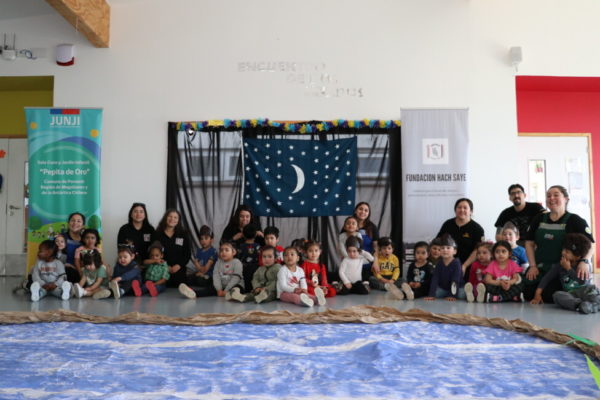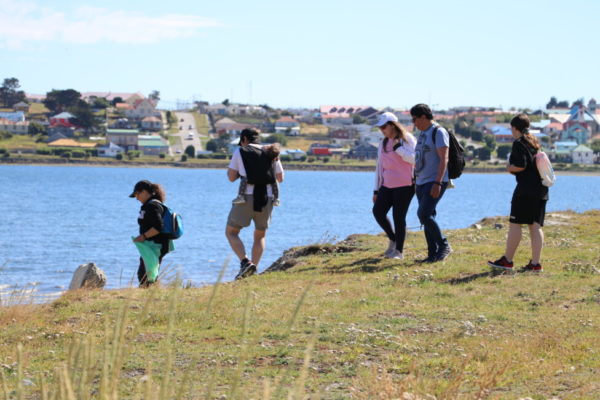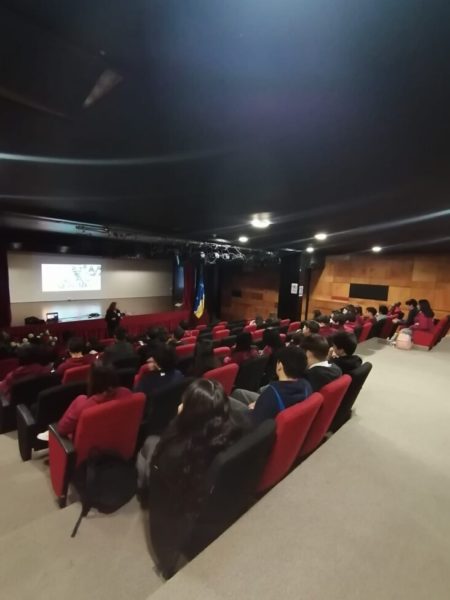Indigenous Selk’nam People Reemerge on Chile’s Southern Tip

HAVANA TIMES – In Chile, the history of the Selk’nam peoples on Tierra del Fuego goes back 10,000 years. Decimated by genocide in the nineteenth century, the indigenous group is currently reviving, thanks to the families’ efforts to reconstruct their personal histories and articulate their communities’ values.
The Selk’nams are also organizing to prevent the commercialization of their image and combat the ignorant view of them as an extinct tribe of indigenous people with painted bodies.
According to the 2017 census, 1,444 of Chile’s 19.5 million inhabitants identified as Selk’nam. This number is now increasing daily, due to the government’s official recognition of the group as an original people.
A Congressional bill in favor of their recognition was first proposed in August 2019. Four years later, the law was approved in Chile’s Parliament with 117 votes in favor and one abstention.
“The most important thing about the process, which was very hard, is that we were able to make it clear to the country and the world that we are not extinct. The passage of this bill demands a much-needed review of local history, and changes in the educational curriculum,” Hemany Molina told IPS.
Hemany, a writer and poet, currently serves as director of research and environmental care at the Hach Saye Foundation based in Porvenir, a town on the Chilean side of the archipelago known as “Tierra del Fuego,” at the far southern tip of South America.
“The state has listened, and now it must take responsibility for the families that begin to appear,” she added. Molina, 56, was key to the recognition of the Selk’nam people.
Historically, members of this indigenous group were hunters and gatherers. The first Europeans who made contact with them described them as men of great height.
The genocide that nearly wiped them out began in 1881, with an ethnic cleaning operation aimed at taking over their lands. Among those responsible was a group that called itself the Society for the Exploitation of Tierra del Fuego, and other companies financed with British capital. The killings were also planned and carried out by the large ranch owners, in coordination with local authorities and with the consent of the Catholic missionaries.
In his book Selk’nam, Genocide and Resistance, Jose Luis Alonso documented how the desperate Selk’nam resistance was defeated through assassinations, slavery, deportations, and the kidnapping of children. Their near-elimination made possible the pasturing of over a million sheep, whose wool was exported to Great Britain.
The massacres included bounty killings, with the offer of one sheep for every murdered Selk’nam. During those years the group’s population plummeted from 4,000 to 297.
This genocide destroyed the Selk’nam’s traditional way of life on their lands located between the Atlantic and Pacific Oceans. “The actions to eliminate our culture were so aggressive that only a broken memory exists, which we’ve been reconstructing piece by piece from the shreds of recollections of the community elders,” writer Hemany Molina explains.

What it means to identify as a Selk’nam
Speaking with IPS, 60-year-old Adriana Mercado shared the process she went through in recognizing herself as a Selk’nam. Mercado is an artist, and also a professor of research techniques and semiotics at the Andres Bello University and the Mayor University, both private Chilean centers.
“I learned [of my Selk’nam roots] only a few years ago. I received a very good education and have always liked researching things. Even so, I had no idea that the Selk’nam were a living people,” she recounted.
“From the moment when I discovered that I shared this indigenous identity, the knowledge has given me a certain serenity. It’s been a process of finding an explanation for certain traits, nostalgias, abilities, and a way of being,” she revealed.
To this educator, it also meant a gigantic responsibility to inform and educate herself, so as to discover her own origins. In the talks she now gives to children and adults, Adriana Mercado has been able to confirm the cultural prejudices and the ignorance of Chilean society.
“In some schools, the children ask me: ‘How come you’re dressed like that? Why aren’t you wearing skins? Where’s your spear?’ In meetings with other teachers they tell me: ‘I admire your people – I’ve done a lot of research and what I most like is how they lived in canoes.’ But the Selk’nam didn’t use canoes. We’re a people who lived on land, through hunting and gathering.”
Hemany Molina has also had to face situations where she felt disparaged. “I attribute it to ignorance, intolerance, and racism. An academic world that considers us extinct holds much of the responsibility for this discrimination,” she affirmed.
Adriana Mercado concurs and speaks of the need to put value on the indigenous. “In Bolivia and Mexico, people are proud of their roots. For us here in Chile, it’s just the opposite,” she observed.
Over two million Chileans declare themselves members of an indigenous people. 1.7 million define themselves as Mapuches, while the less populated groups include the Aymara and Daguitas, the Rapanuis, the Atacameños, the Quechuas, the Collas, the Changos, the Kawesqares, the Yaganes and the Selk’nam.

Other indigenous peoples also struggling for recognition
Constanza Tocomal, an anthropologist with a Master’s in history and a doctoral student in Latin American Studies at the University of Chile, began the characterization of the Selk’nam prior to the legislative process to officially recognize the group. She notes that other South American peoples are going through a similar process.
“There’s a process of reemergence and reconfiguration of identity in different parts of the Southern Cone. There’s the Pehuenches in eastern Patagonia, the Huarpes in the area around Mendoza, Argentina, and even the Charruas in Uruguay,” she explained. According to Tocomal, there’s a great need to reexamine and reframe history, especially the way in which Latin Americans have conceived themselves as nation states.
“It’s would do us all good to realize that we have different cultural repertories, multiple identities, and that our history is much less linear than what’s been understood. That understanding enriches us enormously,” she affirmed. Constanza Toconal also advocated for deepening our knowledge of the Selk’nam language.
“If we understand language as a living sphere that changes, the idea is that the Selk’nam language isn’t dead, but in a process of revitalization” she maintained.
Hemany Molina pointed out that the Selk’nam children’s mother tongue is Spanish, and in school they’re taught English. “This leads us to think that someday, when they’re older, they could be trilingual.” She explained that there are many written and recorded registries which can be studied to be able to recover the language.
“In Argentina, there are those who reconstruct languages, and we’re in that process, at the level of a two or three-year-old child,” Molina stated. She lamented the fact that there are no more living speakers of Selk’nam, and mentioned Argentinian Margarita Maldonado as one of those most advanced in the language.
“When there are more people at the same level, we’ll be able to speak in Selk’nam. Today, we greet each other and introduce ourselves that way, and on social media we post videos in Selk’nam,” she revealed.
Meanwhile, there’s been a reemergence of the Selk’nam identity, and ever more families join the process of awakening memory. As their recollections continue emerging, they advance towards being able to speak.
The Rise of a new Selk’nam people
From Porvenir and the Magallanes region as a whole, a new Selk’nam people is arising in a slow process of reconstruction. According to Hemany Molina, the most important thing is to understand that, despite the romantic expectation that today’s Selk’nam will fulfill the cultural patterns and stereotypes, these won’t be found.
“We’re in a process of territorial reinsertion that implies responding daily to questions about the Selk’nam values. People expect to see those men and women who were left frozen in the old photographs that implanted the image of an iconic Selk’nam figure. However, that’s very far from our reality,” she warned.
The Hach Saye Foundation promotes activities, with support from the University of Magallanes, the Porvenir school system, and the municipality of Timaukel, among other entities.
“The Timaukel community has a wonderful project, which involves raising the profile of Pampa Guanaco, a border city [between Chile and Argentina on the Tierra del Fuego archipelago]. This could lead to a rise of tourism around a respectful perspective on the Selk’nam identity, with a cultural and educational focus,” Hemany Molina said.
Last summer, a series of conferences were held in Porvenir¸ with students and teachers from the town’s Liceo Hernando de Magallanes. They also held a trashumant circuit [reenactment of the seasonal herding movements], with walks to historic and archaeological sites, and the opportunity to collect materials for artistic creations involving shells, feathers, and basketry.
They have also promoted a 15-week online school with two levels, to share history and present developments and aspects relevant to their culture, territory, and nature. In addition, they’re organizing an annual reunion for November 25, anniversary of the first wave of Selk’nam murders in 1886.
The Selk’nam are also demanding a timely process of indigenous accreditation in terms of the genocide, since it’s very difficult to find written historic documentation about what happened to each family.
According to Hemany Molina, the State has a lot to say and contribute in this, because it forms part of the reparations process. “A lot of time went by before we could recover the will to say we’re Selk’nam. After the genocide and all that our grandparents suffered, we were left with only the little that they remembered. Now we’re defending that little, in order to consolidate an identity that was ripped away from us,” she concluded.





